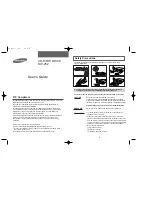
VLT
®
FCD Series
Earth fault
The IGBT module cuts out within 100
s in case of
an earth fault on one of the motor terminals U, V, W
(96, 97, 98), although depending on impedance and
motor frequency.
Output connection
Motor terminals U, V, W (96, 97, 98) for the motor
can be connected/disconnected as often as required.
There is no way that the frequency converter can be
destroyed by connecting/disconnecting the motor ter-
minals. However, fault messages may appear.
Motor-generatedovervoltage
The voltage in the intermediate circuit is increased
when the motor acts as a generator. To protect the
frequency converter the IGBT module is discon-
nected when a specific voltage level is reached.
Motor-generated overvoltage can occur in two in-
stances:
1. The load drives the motor, i.e. the load generates
energy.
2. During deceleration (ramp-down) if the moment of
inertia is high, the load is low and the ramp-down
time too short for the energy to be dissipated as
a loss in the frequency converter, the motor and
the unit. The control unit attempts to correct the
ramp if possible.
The fault can be removed by connecting a brake re-
sistor, if the frequency converter has an integrated
brake module. If the frequency converter does not
have an integrated brake module an AC brake can
be used, see parameter 400
Brake function
.
See the section entitled
Brake resistors
.
Static overloading
When the frequency converter is overloaded (current
limit in parameter 221
Current limit I
LIM
is reached),
the control reduces the output frequency in an
attempt to reduce the load. If the overloading is ex-
treme, there might be an output current that causes
the frequency converter to trip after approx. 1.5 sec.
See parameter 409
Trip delay overcurrent, I
LIM
.
An extreme overload will cause the switching fre-
quency to be derated to 3000 Hz.
■
dU/dt on motor
When a transistor in the inverter is opened, the volt-
age across the motor terminals will rise by a voltage/
time ratio (dU/dt) determined by:
-
the motor cable (type, cross-section, induction,
capacity, length and screened/armoured/un-
screened/unarmoured)
-
the mains voltage
Self-induction in the motor cable leads to an over-
swing U
PEAK
of the output voltage each time a
transistor in the inverter is opened. After U
PEAK
the
output voltage will stabilise at a level determined by
the voltage in the intermediate circuit. U
PEAK
and
dU/dt influence the lifetime of the motor, especially
motors without phase insulation paper in the coils. If
the motor cable is short (a few metres), the over-
shoot U
PEAK
is low, while the dU/dt is high. If the
motor cable length is increased, U
PEAK
is increased,
while dU/dt decreases.
■
Switching on the input
The waiting time between switching the mains volt-
age on terminals 91, 92 and 93 must be min. 30 sec.
■
Acoustic noise
The acoustic noise from the frequency converter
comes from two sources:
1. DC intermediate circuit coils.
2. Inverter.
Below are the typical values measured at a distance
of 1 m from the unit at full load:
FCD 303-330 3 x 400 V: 52 dB(A).
■
Derating for ambient temperature
The ambient temperature (T
AMB,MAX
) is the maxi-
mum temperature allowed. The average (T
AMB,AVG
)
measured over 24 hours, must be at least 5
C
lower. If the frequency converter operates at temper-
atures above 40
C, a derating of the rated output
current is necessary .
■
Temperature-dependent switch frequency
This function ensures the highest possible switch fre-
quency without the frequency converter becoming
thermally overloaded. The internal temperature is
the actual expression of the degree to which the
MG.04.A1.02 - VLT is a registered Danfoss trade mark
119
All
about
FCD
300
















































